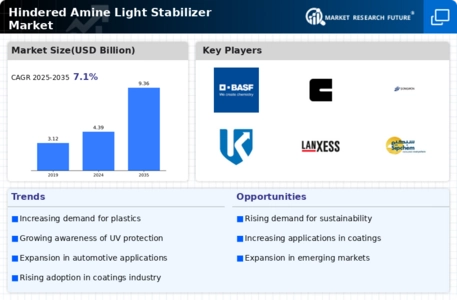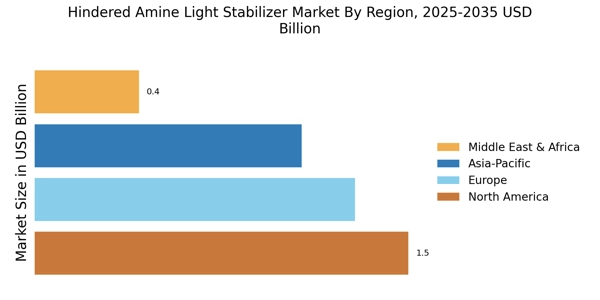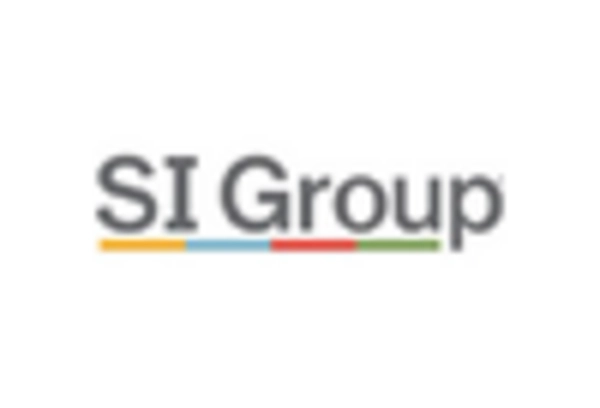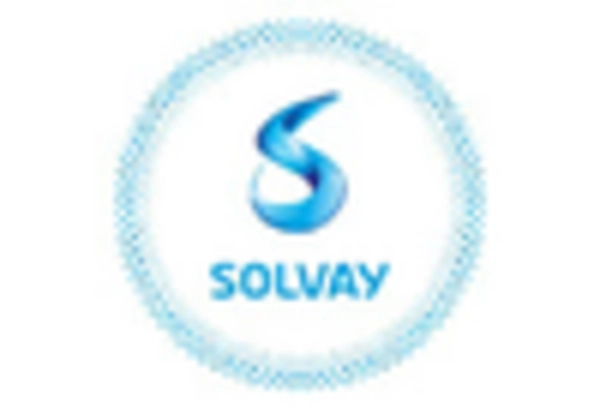Growth in the Coatings Industry
The Hindered Amine Light Stabilizer Market is significantly influenced by the expansion of the coatings sector. As the demand for high-quality coatings rises, particularly in architectural and industrial applications, the need for effective light stabilizers becomes paramount. Hindered amine light stabilizers are crucial in preventing color fading and gloss loss in coatings exposed to sunlight. Market analysis reveals that the coatings industry is expected to witness a growth rate of around 4% annually, driven by increased construction activities and infrastructure development. This growth directly correlates with the rising consumption of hindered amine light stabilizers, as manufacturers seek to enhance the performance and durability of their products.
Rising Demand for Durable Materials
The Hindered Amine Light Stabilizer Market is experiencing a notable increase in demand for durable materials across various sectors, including automotive, construction, and packaging. As industries strive for longevity and performance, the incorporation of hindered amine light stabilizers becomes essential. These stabilizers enhance the resistance of materials to UV radiation and thermal degradation, thereby extending their lifespan. Recent data indicates that the demand for high-performance polymers, which often utilize these stabilizers, is projected to grow at a compound annual growth rate of approximately 5% over the next five years. This trend suggests that manufacturers are increasingly prioritizing product durability, which in turn drives the need for effective light stabilizers.
Increased Awareness of UV Protection
The Hindered Amine Light Stabilizer Market is benefiting from heightened awareness regarding the detrimental effects of UV radiation on materials. As consumers and manufacturers alike become more cognizant of the need for UV protection, the demand for hindered amine light stabilizers is likely to surge. These stabilizers play a critical role in safeguarding products from UV-induced degradation, which can lead to significant economic losses. Recent studies indicate that the market for UV protection solutions is expanding, with a projected growth rate of 6% over the next few years. This trend underscores the importance of incorporating hindered amine light stabilizers in various applications, thereby driving market growth.
Regulatory Support for Sustainable Practices
The Hindered Amine Light Stabilizer Market is increasingly influenced by regulatory frameworks that promote sustainable practices. Governments and regulatory bodies are implementing stringent guidelines aimed at reducing environmental impact, which encourages the adoption of eco-friendly materials and additives. Hindered amine light stabilizers, particularly those that meet these regulatory standards, are becoming more sought after. The market is expected to benefit from this trend, as manufacturers seek compliant solutions that do not compromise on performance. Recent regulatory initiatives suggest a potential increase in the market for sustainable light stabilizers, with growth rates projected at around 4% over the next few years. This regulatory support is likely to drive innovation and investment in the Hindered Amine Light Stabilizer Market.
Technological Innovations in Polymer Chemistry
The Hindered Amine Light Stabilizer Market is poised for growth due to ongoing technological innovations in polymer chemistry. Advances in the formulation and application of hindered amine light stabilizers are enabling manufacturers to develop more effective and efficient products. These innovations not only enhance the performance of stabilizers but also expand their applicability across diverse materials. The market is witnessing a shift towards more sustainable and eco-friendly stabilizers, which aligns with broader industry trends. As a result, the demand for advanced hindered amine light stabilizers is expected to rise, potentially leading to a market growth rate of 5% in the coming years. This evolution in technology is likely to reshape the landscape of the market.


















Leave a Comment